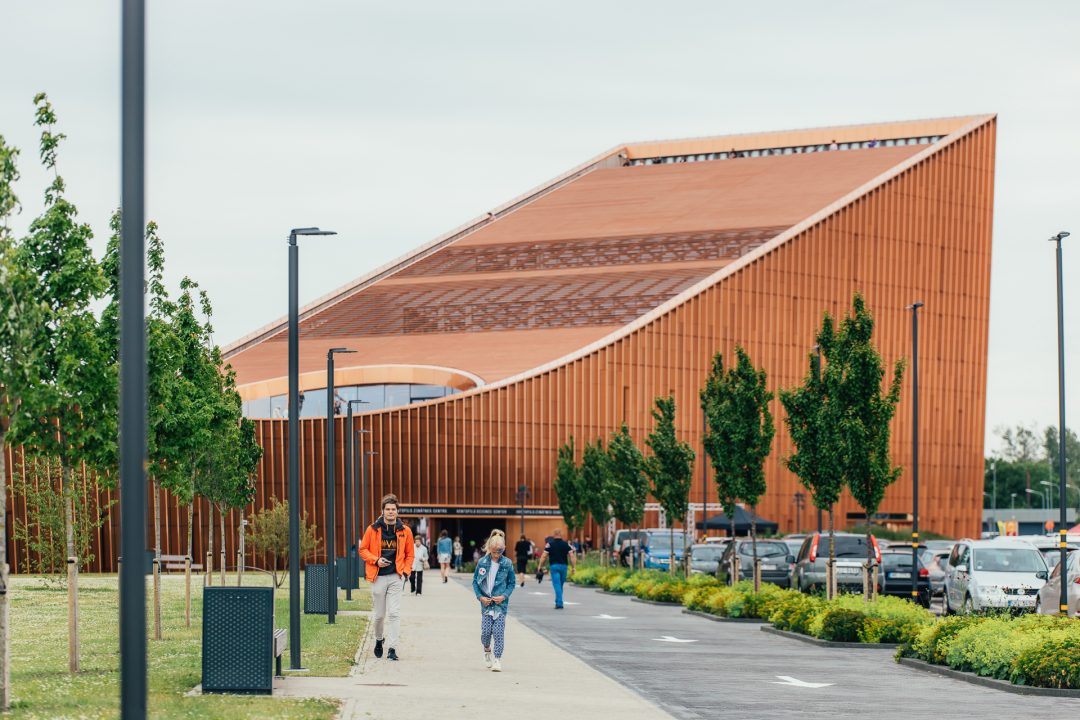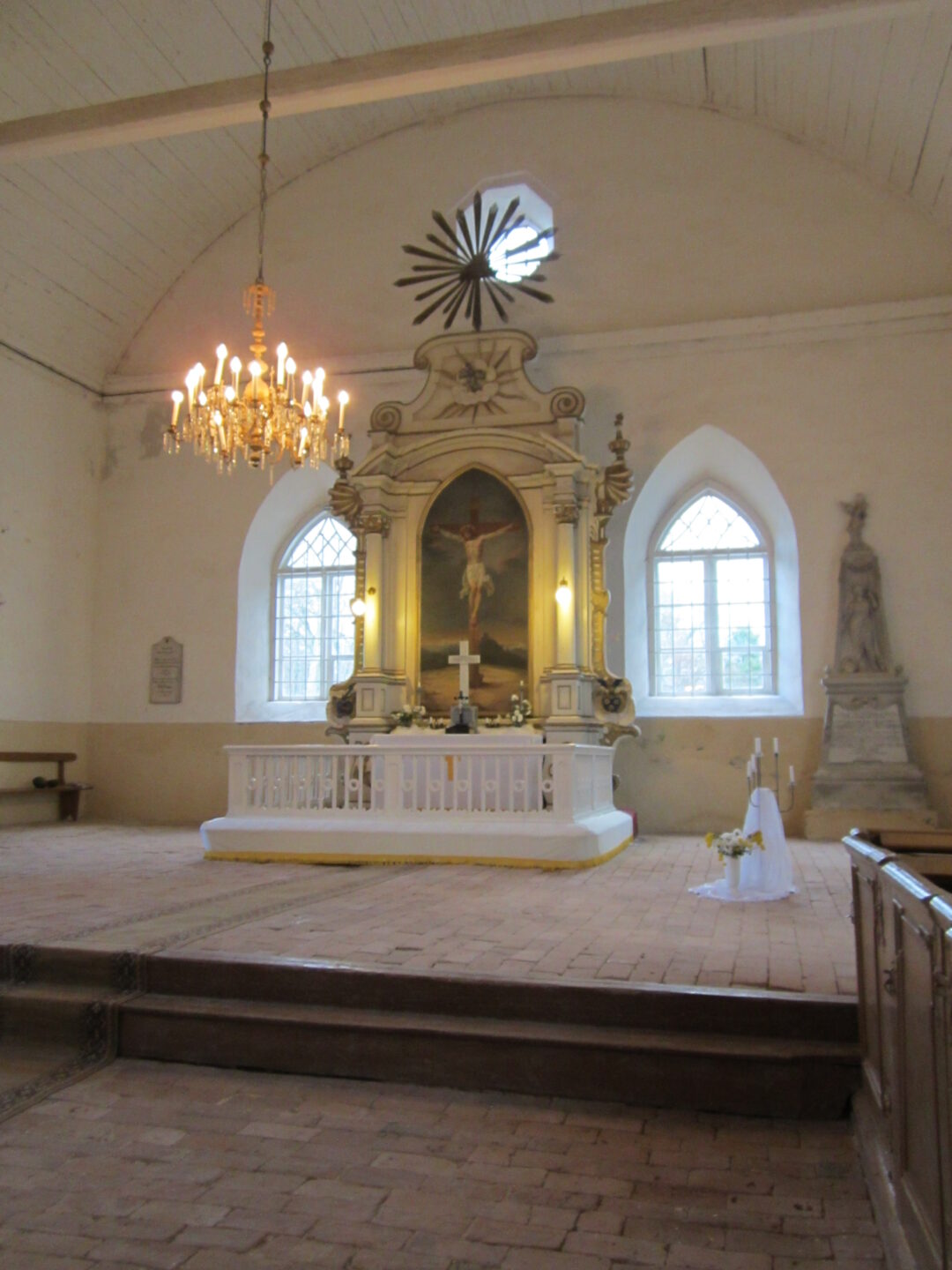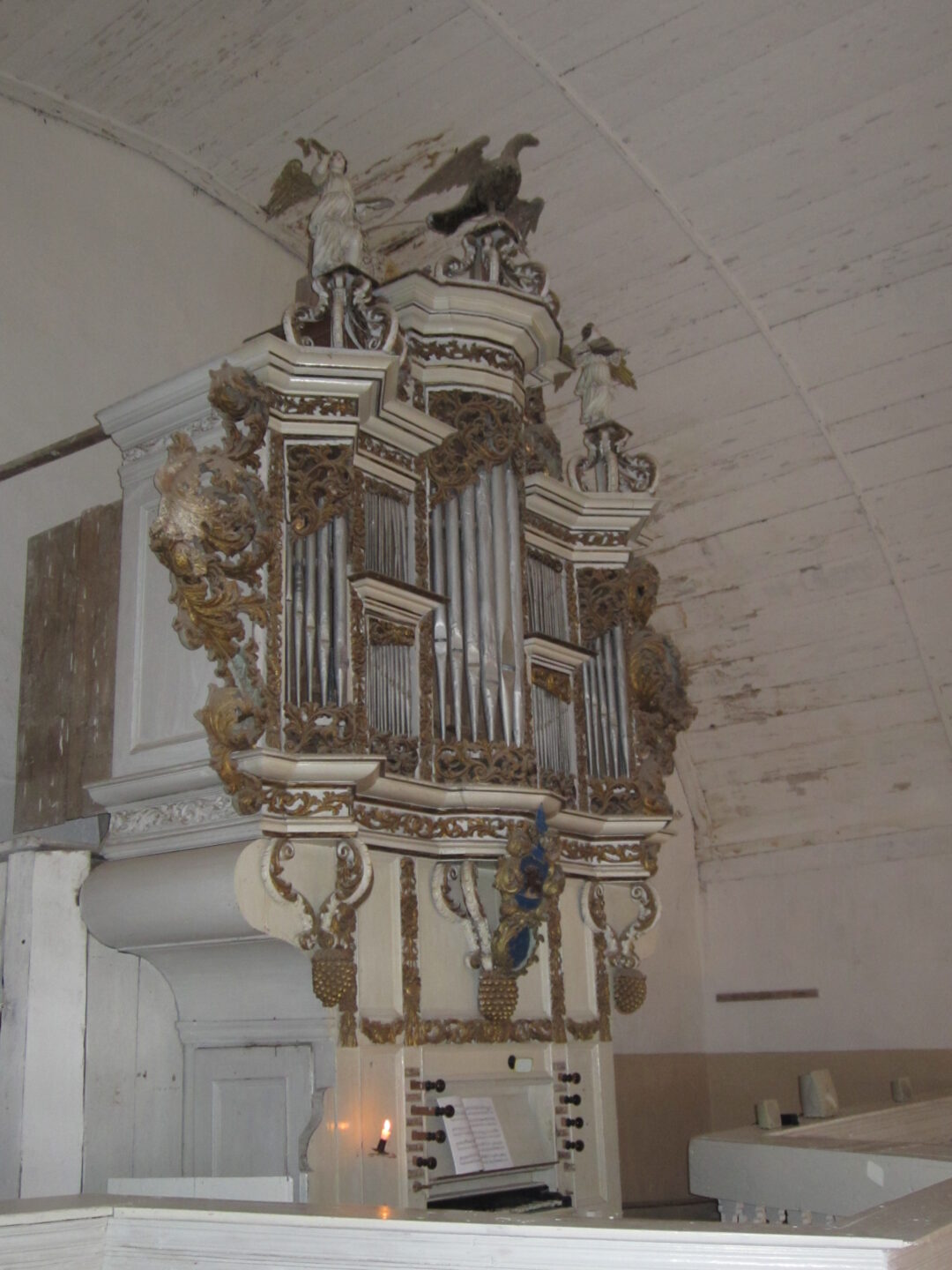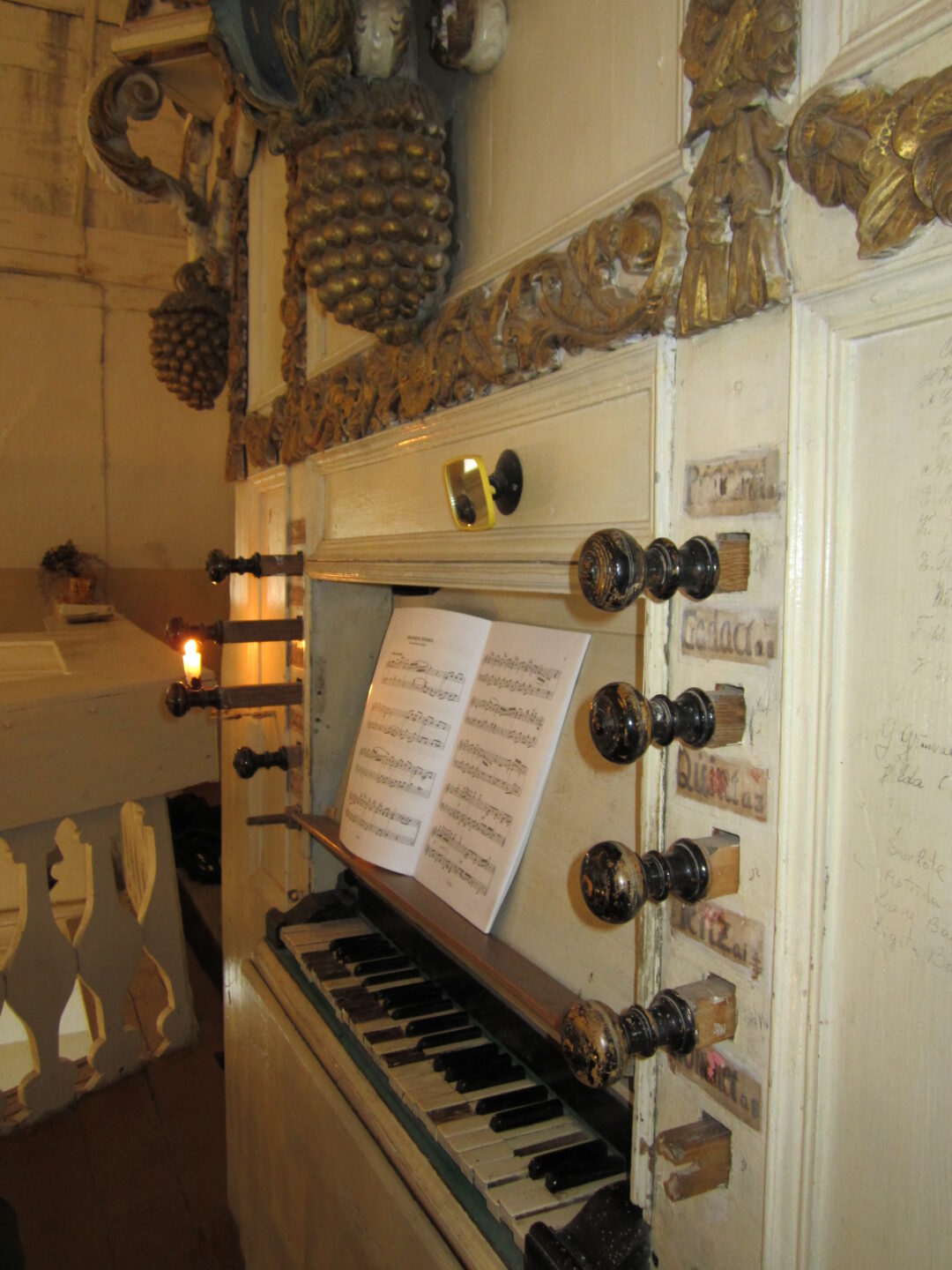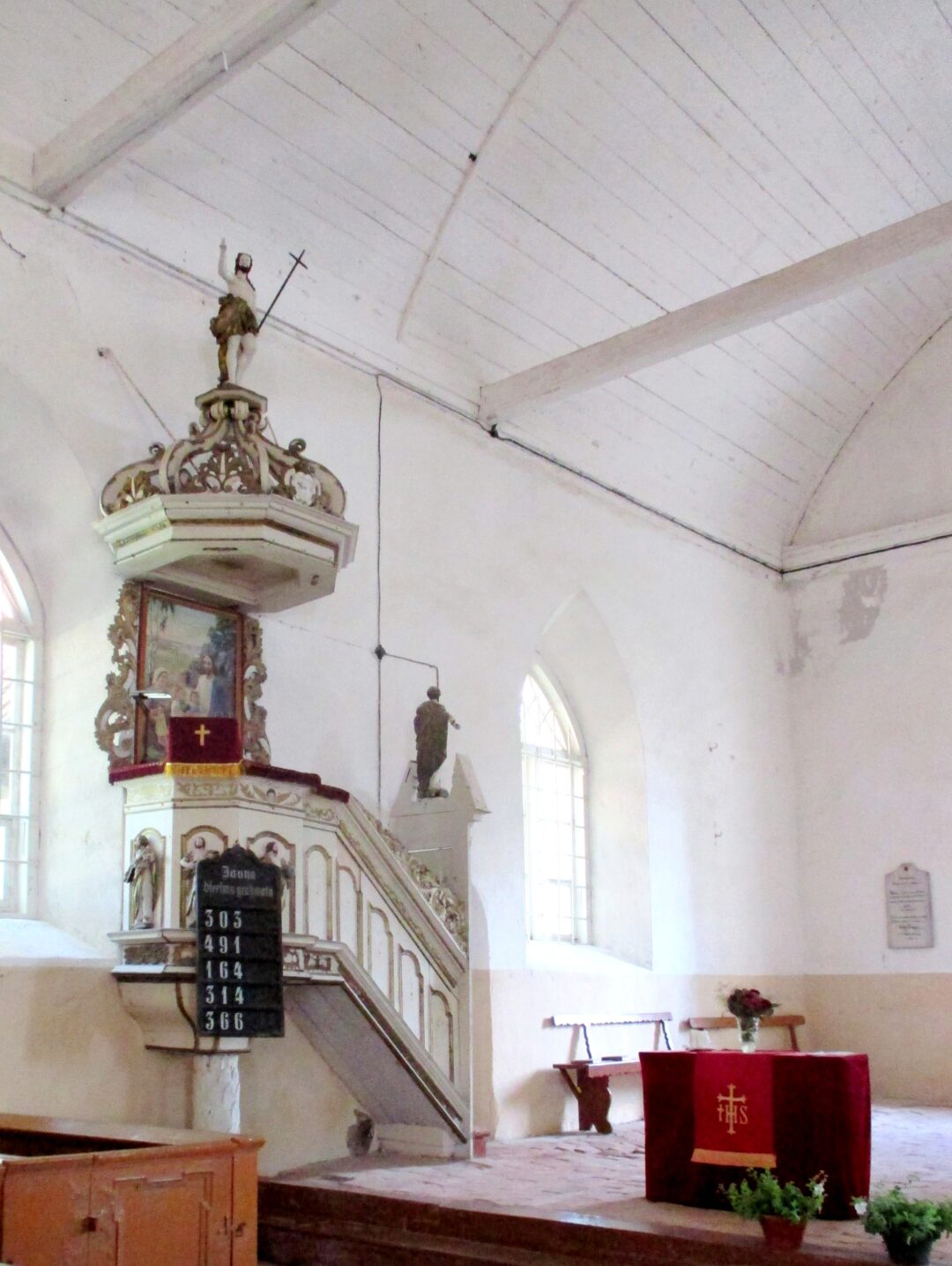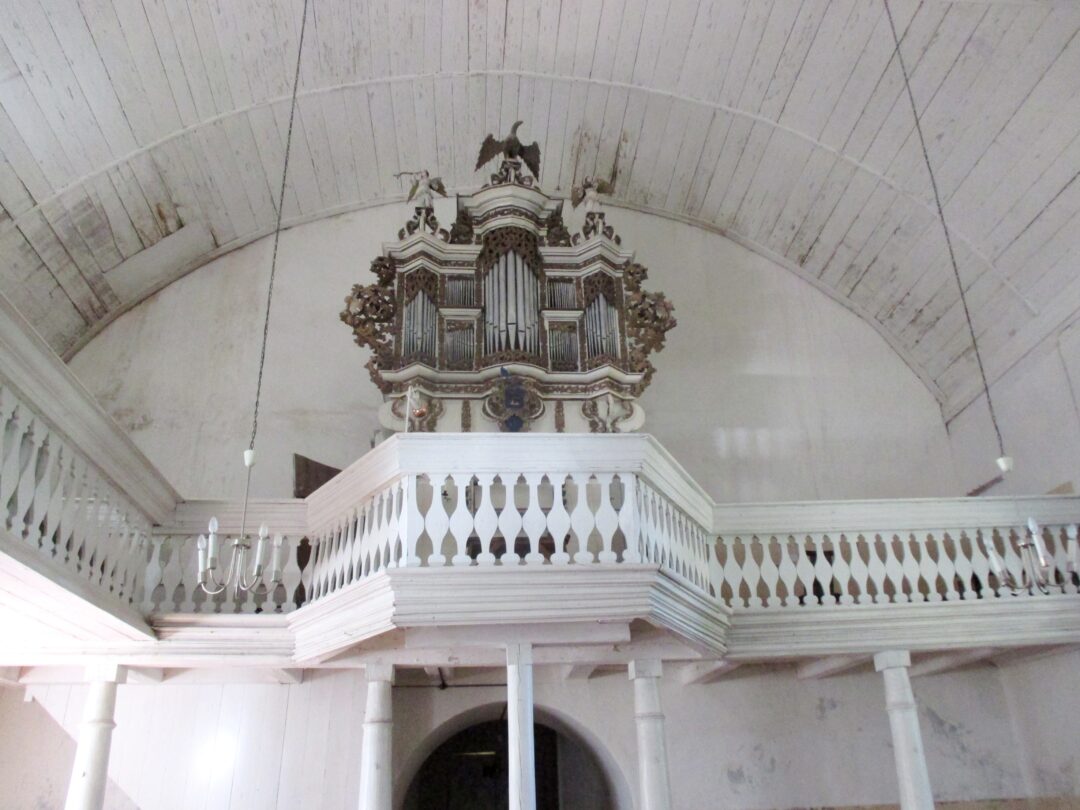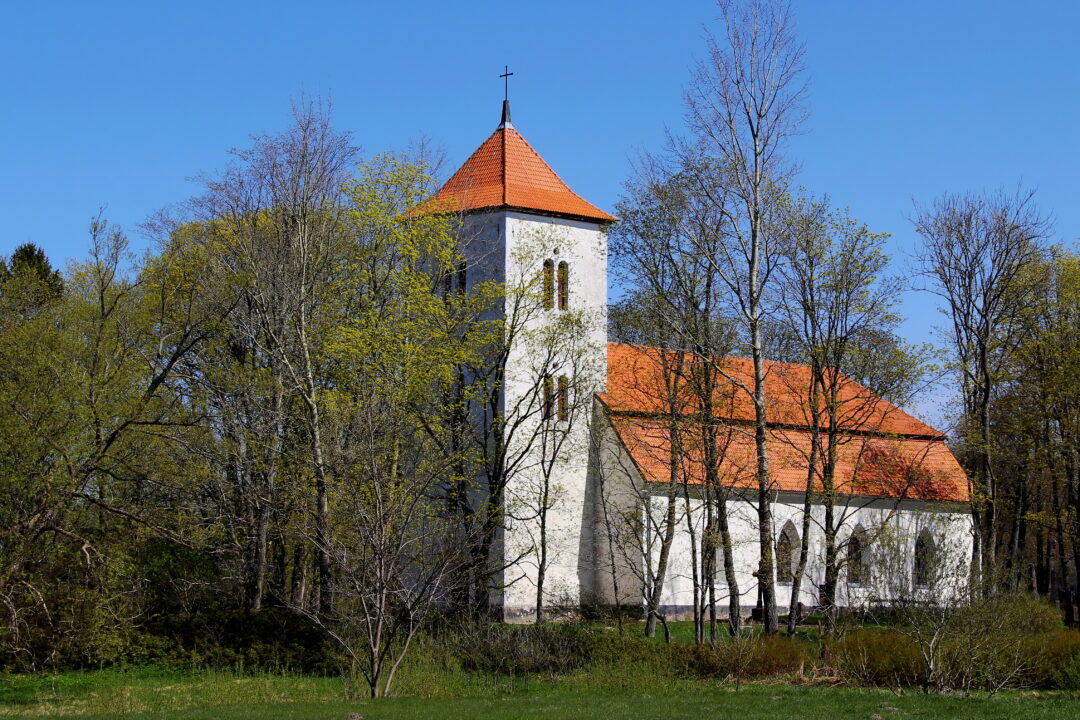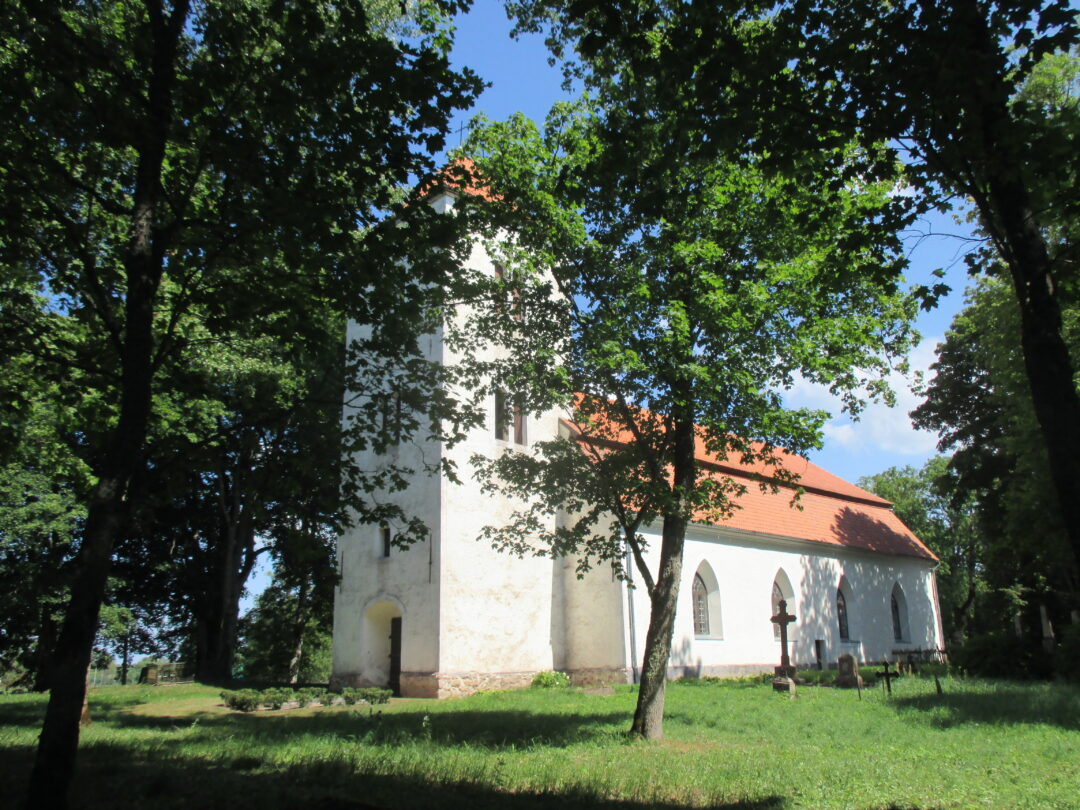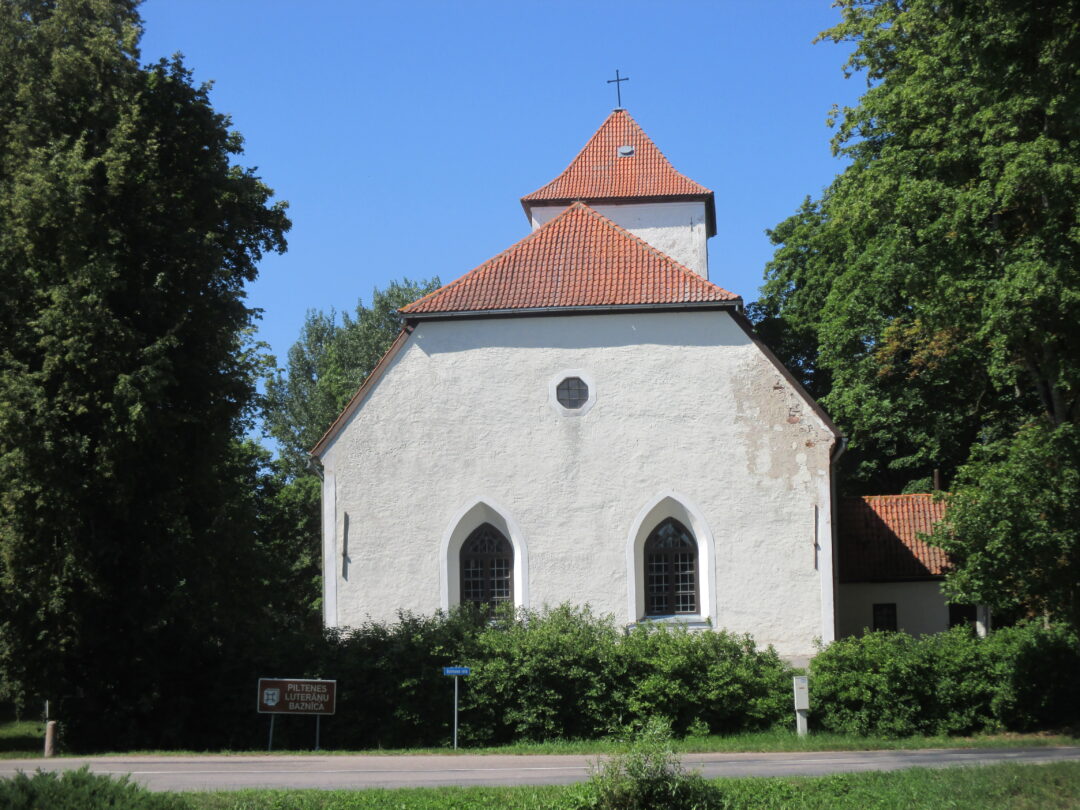The pride of Piltene Church is a gilded wooden altar and pulpit, organ with 9 registers, wooden images of the apostles from the 12th century, benches – steps, separate lodges with forged hinged doors.
In 1719, the current stone church was completed on the site of the collapsed wooden church. In 1722, an organ with nine registers was made; the author of the prospectus was Liepaja wood sculptor Joachim Kreuzberg.
Benches for 222 seats were with forged hinges. Church sculptures are typical Baroque works. Here, the twelve holy apostles were placed along the edges of the pulpit.
The church was built in 1557. During the Great Northern War, the church building began to collapse, and in 1708 the congregation decided to build a new church. In 1710, the great plague began and the construction was stopped. In 1717, during the aftermath of the plague, 257 peasants survived in the 34 manors belonging to Piltene. 1719. gadā sabrukušās koka baznīcas vietā pabeidza celt tagadējo mūra baznīcu.
The church still has wood carvings from the 16th century. Instead of the wood-carved image of Christ, as it was in the first church, the new one had a painting of the altar of Baron Rene, the new church was wide and bright.
Listen to the unique, virtuoso sound of the second oldest organ in Latvia – Piltene Lutheran Church organ:
The entry is taken from the Latvian organ catalogue, which is financed by the Culture Capital Foundation. Samples of organ sound were played by Lilita Ozola http://www.music.lv/lek/piltene_main.htm

